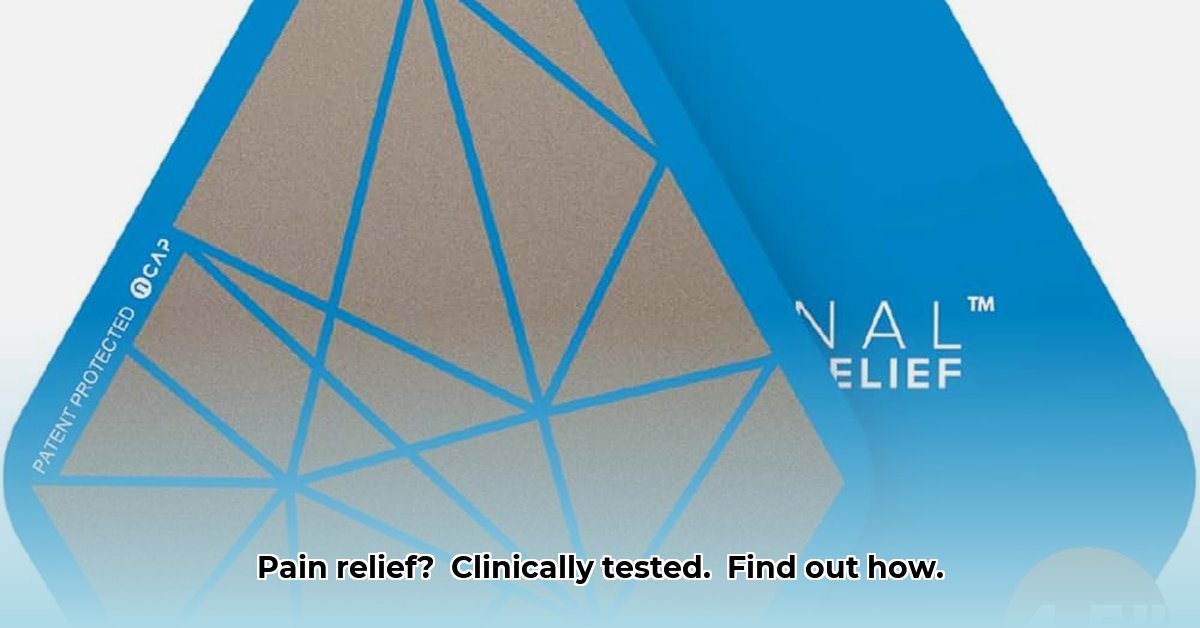
A Closer Look at the Signal Relief Patch: Promise and Uncertainty
The Signal Relief patch has generated significant buzz, promising drug-free pain relief for musculoskeletal conditions. But does this innovative technology truly deliver on its ambitious claims? This in-depth analysis explores the available data, weighing the encouraging initial findings against the need for further investigation. We'll examine customer satisfaction, clinical trial results, the proposed mechanism of action, and the crucial importance of regulatory compliance.
High Customer Satisfaction: A Strong Indication, Not Definitive Proof
Signal Relief boasts remarkably high customer satisfaction rates, frequently exceeding 97%. This overwhelmingly positive feedback suggests the patch is effective for many users. These testimonials, while compelling, cannot replace rigorous scientific evidence. User experiences provide valuable insight, but they don't equate to definitive proof of efficacy or safety. What might account for this high satisfaction rate? Is it a genuine reflection of the patch's effectiveness, or are other factors at play? More research is crucial to understanding the correlation between user experiences and actual clinical outcomes.
Clinical Trial Results: Promising, but Limited in Scope
Early clinical trials have demonstrated a significant average reduction in pain for participants, with reports of up to a two-thirds decrease in pain intensity. These initial findings, while encouraging, are based on relatively small-scale pilot studies. 1 The study design, including sample size and duration, needs detailed scrutiny to assess the reliability of the results. The methodology employed in measuring pain reduction also requires careful consideration. While the initial data offer a glimpse of potential, substantially larger, independently verified clinical trials are crucial to confirm these promising findings before drawing any definitive conclusions. Are these positive results repeatable across a larger and more diverse population? This remains a critical unanswered question.
Unraveling the Mechanism: How Does the Patch Work?
Signal Relief's proposed mechanism involves microscopic particles intercepting pain signals before they reach the brain. This intriguing concept hinges on the principles of neuromodulation (the modulation of nerve activity). However, the precise details of this mechanism remain somewhat opaque. The company's explanation of "microscopic antennas" blocking pain signals requires detailed scientific verification through independent investigation. Questions surrounding the efficacy of these particles and potential side effects from this novel technology remain unanswered. Peer-reviewed studies are essential for validating this innovative approach to pain management. Does this mechanism actually work as proposed, or is there another explanation for the observed pain reduction?
Long-Term Effects and Safety: A Need for Extended Studies
The available data predominantly focuses on short-term effects. What about long-term safety and efficacy? Extended trials are imperative to fully assess the patch's safety profile over prolonged periods. Are there potential side effects that only manifest after extended use? Long-term studies are critical for understanding potential cumulative effects and ensuring the patch’s continued safety and effectiveness. The lack of comprehensive long-term data presents a significant area requiring further research. What long-term risks might be associated with consistent use of the patch?
Competitive Landscape: A Place in the Market
Signal Relief enters a competitive market already populated with diverse pain relief options. Its drug-free approach and high reported satisfaction rates differentiate it from competitors, but robust clinical evidence is critical for broad market acceptance and regulatory approval. How does this technology compare to existing non-pharmacological and pharmacological pain management strategies? A thorough comparative analysis and direct head-to-head trials are needed to fully ascertain its standing within the current market.
Actionable Steps: A Path Forward
Several stakeholders must take decisive action to fully explore the potential of the Signal Relief patch:
- TheSignalPatch Company: Conduct large-scale, independent clinical trials; publish detailed study reports transparently; clearly define the mechanism of action in peer-reviewed publications.
- Investors: Critically assess existing clinical data; conduct thorough market research to evaluate the true market potential.
- Consumers: Seek independent verification of claims; consult healthcare professionals before use; carefully examine product information.
- Regulatory Agencies: Thoroughly investigate the scientific basis of all claims; monitor post-market surveillance data for adverse effects.
Risk Assessment: A Balanced Perspective
A realistic assessment of potential risks is essential:
| Aspect | Likelihood of Risk | Severity of Risk | Mitigation Strategies |
|---|---|---|---|
| Unproven Mechanism | Moderate | Moderate | Rigorous independent validation studies; clear explanation of the proposed mechanism. |
| Lack of Long-Term Data | High | Moderate | Comprehensive long-term safety and efficacy studies; publication of data in peer-reviewed journals. |
| Marketing Claims | Moderate | Low | Strict regulatory compliance; claims backed by robust scientific evidence. |
| Manufacturing Defects | Low | High | Robust quality control measures; reliable supply chain management. |
Regulatory Compliance: A Cornerstone of Success
Adherence to all advertising and marketing regulations is paramount. All claims related to efficacy and safety must be supported by robust scientific evidence. Failure to comply risks regulatory sanctions, including fines and potential product recalls. Securing FDA approval (or equivalent international approvals) is crucial for building credibility and ensuring the product's long-term viability. The company's future success hinges upon this pivotal step, paving the way for wider acceptance and broader market penetration.
In conclusion, the Signal Relief patch holds promise as a non-pharmacological pain relief option. However, significant questions remain regarding its long-term safety and the validity of its proposed mechanism. Further research is essential before definitive conclusions can be drawn about its clinical efficacy and potential place within mainstream pain management. The narrative is encouraging, but the scientific story requires further compelling chapters before a definitive ending can be written.